#gender equity panel
Text
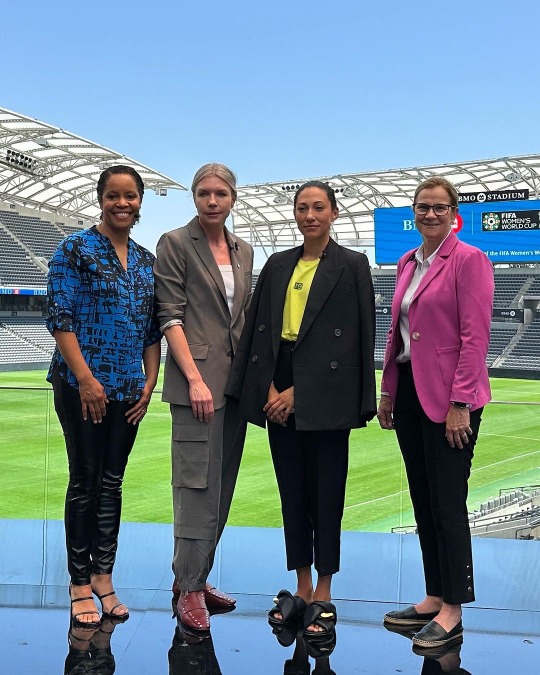
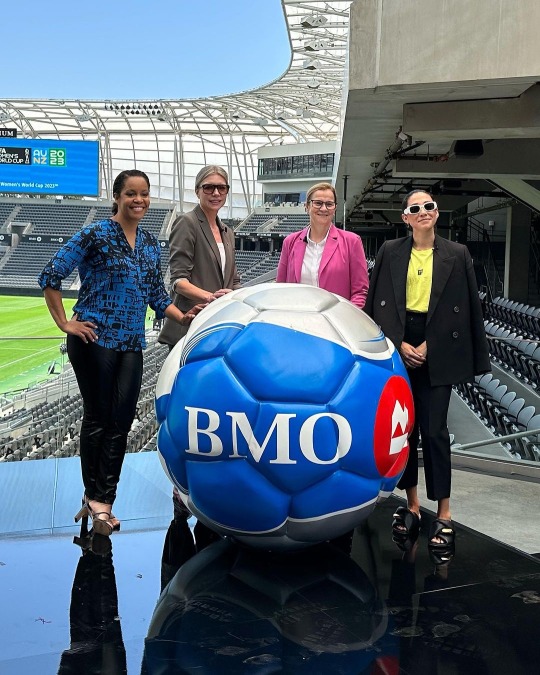


eagsports Our client Christen Press speaking at the BMO FIFA Women’s World Cup 2023 Gender Equity in Soccer panel discussion today at BMO Stadium We are so proud to represent a fearless female athlete who uses her platform to champion change. Thank you, Christen!!
233 notes
·
View notes
Text
TFW a con panel sounds really interesting but all of names are male-coded

0 notes
Text
by Haley Cohen
A University of Minnesota professor who denied Hamas terrorists committed rape and sexual violence against Israeli women on Oct. 7 is being considered for a top administrative position in the college’s diversity, equity and inclusion (DEI) department.
Sima Shakhsari is an associate professor in the department of Gender, Women and Sexuality Studies, and has been seen on campus attending pro-Palestinian rallies chanting “Globalize the Intifada.” Shakhsari, who uses they/he/she pronouns, also has a long history of aligning with radical groups like Students for Justice in Palestine (SJP).
Shakhsari’s denial that Israeli women were raped by Hamas came during the professor’s testimony last Thursday to the university review panel, part of the application process in being considered for the associate dean of the DEI office in the College of Liberal Arts position.
“I cannot be silenced in the face of this genocide, and I’m not gonna argue whether it’s a genocide or not,” Shakhsari said in a one-hour speech, which almost entirely focused on Israel and Gaza.
In the speech, she volunteered she hadn’t seen any evidence of Hamas’ sexual violence against Israelis — which has been well-documented by testimony from victims, video footage and forensic evidence. “Of course, any person who has been raped, I am a rape crisis counselor, I believe the survivors. I am yet to see Israeli rape survivors of Hamas come and speak,” Shakhsari said.
It seems to me that her twisted stance on Hamas is a requirement for most DEI positions.
25 notes
·
View notes
Text
Second gentleman Douglas Emhoff will convene a panel in Atlanta on Tuesday focused on the role men can play in advocating for more access to abortion rights, according to sources familiar with the plans.
The event, timed to mark the five-year anniversary of Georgia Gov. Brian Kemp signing Georgia’s six-week ban on most abortions into law, is expected to feature health care providers, reproductive rights activists, local leaders and students.
Emhoff plans to stress the importance of men supporting abortion rights and using their voices to push to expand women’s ability to get the procedure, the sources said. The audience is expected to be made up primarily of men and will include some students from Morehouse College.
The panel will be held in collaboration with Men4Choice, a group that organizes and trains men to fight for abortion access and mobilizes them to encourage other men to support their cause, the sources said. Men4Choice has also organized engagements with the second gentleman across the country, including in Florida, Arizona and North Carolina.
On Tuesday, Emhoff, who has accompanied Vice President Kamala Harris during some of the more than 80 events she has held on reproductive freedom since Roe v. Wade was overturned, will aim to send a message to men that they must help push back against state abortion restrictions and support candidates who will expand abortion access, the sources said.
The panelists for the event include Carol McDonald, president and CEO of Planned Parenthood Southeast; Davante Jennings, a state organizer for Unite Reproductive and Gender Equity; and Shawana Moore, a women’s health nurse practitioner.
The event will also feature Cecil Price III, a Morehouse University student and member of Men4Choice who is working to organize other men to become more active in the abortion rights movement.
As part of the day, Khadeen Ellis, a television host and actor, will also speak about her pregnancy and motherhood experiences and the particular challenges Black women face during childbirth.
The sources said before the event, Emhoff will also meet with Black small-business owners and visit a local business, where he will seek to call attention to a new tour the vice president recently kicked off aimed at highlighting the need to create economic opportunities.
Abortion has become a top issue this election year, with both President Joe Biden and Harris often attacking former President Donald Trump and Republicans on the topic. Harris, who has emerged as one of the administration’s most prominent voices on abortion, has held abortion-related events in at least 20 states, including a speech she gave in Jacksonville, Florida, on Wednesday just as that state’s new six-week ban on most abortions went into effect.
#us politics#news#nbc news#2024#2024 elections#Douglas Emhoff#vice president kamala harris#abortion#abortion bans#reproductive rights#reproductive justice#reproductive health#Men4Choice#Carol McDonald#Davante Jennings#Shawana Moore#planned parenthood#Unite Reproductive and Gender Equity#Cecil Price III#Morehouse University#Khadeen Ellis#biden administration#Democrats
10 notes
·
View notes
Text
Good News - March 15-21
Like these weekly compilations? Support me on Ko-fi! Also, if you tip me on here or Ko-fi, at the end of the month I’ll send you a link to all of the articles I found but didn’t use each week - almost double the content! (I’m new to taking tips on here; if it doesn’t show me your username or if you have DM’s turned off, please send me a screenshot of your payment)
1. Comeback on the cards for Asian antelope declared extinct in Bangladesh

“Nilgais, the largest antelope species in Asia, are reappearing in northwestern Bangladesh, a country that was part of their historical range but where they were declared locally extinct in the 1930s due to habitat loss and hunting.”
2. Tribal Homes in Minnesotta [sic] Get $1.4M for Clean Electricity
““This grant will allow us to make electrification improvements to our members’ homes and involve them more directly in our efforts to change our energy narrative and achieve our net zero goal.””
3. Pollinators Flock to Flower-Filled Solar Panel Fields

“As populations of crucial pollinators decline, developers have been seeding the grounds of their solar arrays with native wildflowers. Now a five-year study published in Environmental Research Letters confirms that this approach boosts the pollinators’ abundance and diversity—with spillover benefits for surrounding farms.”
4. U.S. House of Representatives Passes WILD Act

“The WILD Act supports funding two different initiatives: […] the U.S. Fish and Wildlife Service’s Partners for Fish and Wildlife Program offers critical support for voluntary conservation initiatives[, and…] The Multinational Species Conservation Funds play a pivotal role in supporting the conservation of imperiled species globally”
5. Private Gender Affirming Care Ban Fails To Advance In England After "Ferret Filibuster"
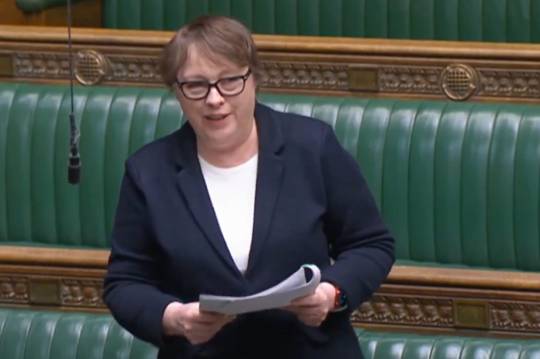
“A bill banning puberty blockers for trans youth and defining sex to exclude trans people was blocked from being heard after Labour MPs spoke at length on pet names and ferrets.”
6. Community-Led Effort to Plant Thousands of Seedlings
“Despite its urban surroundings, [the Tucki Tucki] creek serves as a vital refuge for the endangered platypus and purple spotted gudgeon populations. […] Planting native vegetation along the water’s edge serves multiple purposes. Not only does it provide crucial habitat for the endangered species, but it also helps stabilise the banks, mitigating erosion and reducing sedimentation in the creek.”
7. Court Ruling Halts Wolf Trapping and Snaring in Idaho Grizzly Bear Habitat

“[The ruling] will stop trapping and snaring […] to prevent the unlawful take of Endangered Species Act-protected grizzly bears. The decision stated, “There is ample evidence in the record, including from Idaho’s own witnesses, that lawfully set wolf traps and snares are reasonably likely to take grizzly bears in Idaho.””
8. A Boston grocery store is bringing community solar to a low-income area
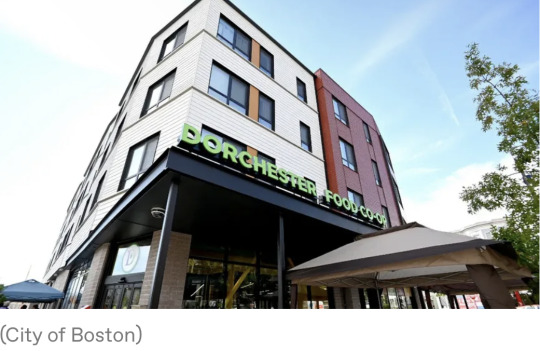
“A group of energy-equity advocates in Boston is launching a community solar cooperative they say could be a scalable model for both reducing carbon emissions and building wealth in disadvantaged communities.”
9. Two-faced solar panels can generate more power at up to 70% less cost
“Scientists at the University of Surrey have built a new kind of solar panel with two faces, both of them pretty. Their flexible perovskite panels have electrodes made of tiny carbon nanotubes. These can generate more power with greater efficiency and at a cost 70% lower than existing solar panels.”
10. It's a boy! Athens zoo welcomes birth of rare pygmy hippo

“A rare and endangered pygmy hippopotamus has been born in Athens’ Attica Zoological Park for the first time in 10 years, delighting conservationists. A lack of male pygmy hippos in captivity had complicated breeding efforts, so zoo staff were “absolutely thrilled” the baby was a boy”
March 8-14 news here | (all credit for images and written material can be found at the source linked; I don’t claim credit for anything but curating.)
#good news#hopepunk#antelope#animals#extinction#conservation#solar#flowers#us politics#lgbtq#ferret#gender affirming care#native plants#wolf#grizzly bear#boston#poverty#solar power#solar energy#solar panels#zoo#hippo#pygmy hippo#baby animals#nature#wildlife#trans healthcare#deer#yellowstone
12 notes
·
View notes
Text
If you were an academic, would you remain in a state which is willing to prosecute you if you deviate from the governor's political line?
With the start of the 2023-24 academic year only six weeks away, senior officials at New College of Florida (NCF) made a startling announcement in mid-July: 36 of the small honors college’s approximately 100 full-time teaching positions were vacant. The provost, Bradley Thiessen, described the number of faculty openings as “ridiculously high”, and the disclosure was the latest evidence of a brain drain afflicting colleges and universities throughout the Sunshine state.
Governor Ron DeSantis opened 2023 with the appointment of six political allies to the college’s 13-member board of trustees who vowed to drastically alter the supposedly “woke”-friendly learning environment on its Sarasota campus. At its first meeting in late January, the revamped panel voted to fire the college president, Patricia Okker, without cause and appoint a former Republican state legislator and education commissioner in her place.
Over the ensuing weeks, board members have dismissed the college’s head librarian and director of diversity programs and denied tenure to five professors who had been recommended for approval.
Essentially, the DeSantis education gestapo is killing off the institution — or at least making it very unattractive to students to the left of Mussolini. Of course it's not just NCF that's been affected.
The new laws have introduced a ban on the funding of diversity, equity and inclusion programs at Florida’s public colleges and universities, withdrawn a right to arbitration formerly guaranteed to faculty members who have been denied tenure or face dismissal, and prohibited the teaching of critical race theory, which contends that inherent racial bias pervades many laws and institutions in western society, among other changes.
In the face of that and other legislation backed by DeSantis and Republican lawmakers that has rolled back the rights of Florida’s LGBTQ+ community, many scholars across the state are taking early retirement, voting with their feet by accepting job offers outside Florida or simply throwing in the towel with a letter of resignation.
[ ... ]
The prevailing political climate in Florida has complicated efforts to recruit qualified scholars from outside the state to fill some vacancies. Kenneth Nunn served on a number of appointment committees during the more than 30 years he spent on the faculty of the University of Florida’s law school. He said the task of persuading highly qualified applicants of color to move to Gainesville has never been more difficult under a governor who, earlier this year, prohibited a new advanced placement course in African American studies from being taught in high schools.
DeSantis came under renewed criticism this month when the state department of education issued guidelines recommending that middle school students be taught about the skills slaves acquired “for their personal benefit” during their lifetimes in bondage.
DeSantis is so fond of slavery that every public college and university in Florida is now an anti-woke plantation run by a DeSantis overseer.
Degrees from public educational institutions in the state may henceforth be looked upon like those from Trump University.
#florida brain drain#ron desantis#florida#state colleges and universities#new college of florida#ncf#political indoctrination in florida colleges#degradation of higher education#republican censorship of academia#republicans#republican nomination for president#election 2024
28 notes
·
View notes
Text

Twitter
Video 📹 where Caitríona mentioned Geena Davis during the ATX TV Festival Outlander panel

By Chris Colin
Published May 25, 2023
Updated May 28, 2023
“Transforming Spaces” is a series about women driving change in sometimes unexpected places.
Geena Davis and her family were returning from dinner in their small Massachusetts town when her great-uncle Jack, 99, began drifting into the oncoming lane of traffic. Ms. Davis was about 8, flanked by her parents in the back seat. Politeness suffused the car, the family, maybe the era, and nobody remarked on what was happening, even when another car appeared in the distance, speeding toward them.
Finally, moments before impact, Ms. Davis’s grandmother issued a gentle suggestion from the passenger seat: “A little to the right, Jack.” They missed by inches.
Ms. Davis, 67, relayed this story in her 2022 memoir, “Dying of Politeness,” an encapsulation of the genially stultifying values that she had absorbed as a child — and that a great many other girls absorb, too: Defer. Go along to get along. Everything’s fine.
Of course the Academy Award-winning actress ditched that pliability long ago. From “Thelma & Louise” and “A League of Their Own” to this year’s coming-of-age drama, “Fairyland,” back-seat docility just wasn’t an option. Indeed, self-possession was her thing. (Or one of her things. Few profiles have failed to mention her Mensa membership, her fluency in Swedish or her Olympic-caliber archery prowess.) But cultivating her own audaciousness was only Phase 1.
Next year will mark two decades since the creation of the Geena Davis Institute on Gender in Media. When her daughter was a toddler, Ms. Davis couldn’t help noticing that male characters vastly outnumbered female characters in children’s TV and movies.
“I knew everything is completely imbalanced in the world,” she said recently. But this was the realm of make-believe; why shouldn’t it be 50/50?
It wasn’t just the numbers. How the women were represented, their aspirations, the way young girls were sexualized: Across children’s programming, Ms. Davis saw a bewilderingly warped vision of reality being beamed into impressionable minds. Long before “diversity, equity and inclusion” would enter the lexicon, she began mentioning this gender schism whenever she had an industry meeting.
“Everyone said, ‘No, no, no — it used to be like that, but it’s been fixed,’” she said. “I started to wonder, What if I got the data to prove that I’m right about this?”
Amid Hollywood’s trumpeted causes, Ms. Davis made it her mission to quietly harvest data. Exactly how bad is that schism? In what other ways does it play out? Beyond gender, who else is being marginalized? In lieu of speechifying and ribbons, and with sponsors ranging from Google to Hulu, Ms. Davis’s team of researchers began producing receipts.
Ms. Davis wasn’t the first to highlight disparities in popular entertainment. But by leveraging her reputation and resources — and by blasting technology at the problem — she made a hazy truth concrete and offered offenders a discreet path toward redemption. (While the institute first focused on gender data, its analyses now extend to race/ethnicity, L.G.B.T.Q.I.A.+, disability, age 50-plus and body type. Random awful finding: Overweight characters are more than twice as likely to be violent.)

Geena Davis accepting the Governors Award for her institute during the Primetime Emmy Awards last year. At her right are the actor Sarah Paulson, left, and the screenwriter Shonda Rhimes. Next to Ms Davis is Madeline Di Nonno, the institute’s president and chief executive. Kevin Mazur/WireImage, via Getty Images
Even when braced for it, the institute’s findings are staggering: In the 101 top-grossing G-rated films from 1990 to 2005, just 28 percent of speaking characters were female. Even in crowd scenes — even in animated crowd scenes — male characters vastly outnumber female ones. In the 56 top grossing films of 2018, women portrayed in positions of leadership were four times more likely than men to be shown naked. (The bodies of 15 percent of them were filmed in slow motion.) Where a century ago women had been fully central to the budding film industry, they were now a quantifiable, if sexy, afterthought.
“When she started to collect the data, it was kind of incredible,” said Hillary Hallett, a professor of American studies at Columbia University and the author of “Go West, Young Women! The Rise of Early Hollywood.” “This wasn’t a vague feeling anymore. You couldn’t claim this was just some feminist rant. It was like, ‘Look at these numbers.’”
Ms. Davis is by turns reserved and goofy offscreen — a thoughtful responder, an unbridled guffawer. (At one point she enunciated the word “acting” so theatrically that she feared it would be hard to spell in this article.) On a recent afternoon in Los Angeles, she took a break from illustrating the children’s book she had written, “The Girl Who Was Too Big for the Page.”
“I grew up very self-conscious about being the tallest kid — not just the tallest girl — in my class,” she said. “I had this childhood-long wish to take up less space in the world.”
In time she began to look beyond her height — six feet — to the insidious messages reinforcing such insecurity.
“Hollywood creates our cultural narrative — its biases trickle down to the rest of the world,” she said in “This Changes Everything,” the 2018 documentary she produced about gender inequity in the film industry. The documentary takes its name from the incessant refrain she kept hearing after the success of “Thelma & Louise,” and later “A League of Their Own.” Finally the power and profitability of female-centric movies had been proven — this changes everything! And then, year after year, nothing.

Geena Davis, right, with the director Penny Marshall on the set of A League of Their Own in 1992. Columbia Pictures, via Everett Collection
It was here that Ms. Davis planted her stake in the ground — a contention around why certain injustices persist, and how best to combat them. Where movements like #MeToo and Times Up target deliberate acts of monstrosity, hers would be the squishier universe of unconscious bias. Did you unthinkingly cast that doctor as a male? Hire that straight white director because he shares your background? Thought you were diversifying your film, only to reinforce old stereotypes? (Fiery Latina, anyone?)
It’s a dogged optimism that powers Ms. Davis’s activism — a faith that Hollywood can reform voluntarily. When she goes to a meeting now, she’s armed with her team’s latest research, and with conviction that improvement will follow.
“Our theory of change relies on the content creators to do good,” said Madeline Di Nonno, the president and the chief executive of the institute. “As Geena says, we never shame and blame. You have to pick your lane, and ours has always been, ‘We collaborate with you and want you to do better.’”
If a car full of polite Davises can awaken to oncoming danger, perhaps filmmakers can come to see the harm they’re perpetuating.
“Everyone isn’t out there necessarily trying to screw women or screw Black people,” said Franklin Leonard, a film and television producer and founder of the Black List, a popular platform for screenplays that have not been produced. “But the choices they make definitely have that consequence, regardless of what they believe about their intent.”
He added: “It’s not something people are necessarily aware of. And there’s no paper trail — it can only be revealed in aggregate. Which gets to the value of Geena’s work.”

“Hollywood creates our cultural narrative— its biases trickle down to the rest of the world,” Ms Davis said in This Changes Everything, the 2018 documentary she produced about gender inequity in the film industry. Magdalena Wosinska for The New York Times
Unique to the institute’s efforts is its partnership with the University of Southern California’s Signal Analysis and Interpretation Laboratory, which uses software and machine learning to analyze scripts and other media. One tool born of that collaboration, Spellcheck for Bias, employs AI to scan scripts for stereotypes and other problematic choices. (Janine Jones-Clark, the executive vice president for inclusion for NBCUniversal’s global talent development and inclusion team, recalled a scene in a television show in which a person of color seemed to be acting in a threatening manner toward another character. Once flagged by the software, the scene was reshot.)
Still, progress has been mixed. In 2019 and 2020, the institute reported that gender parity for female lead characters had been achieved in the 100 highest-grossing family films and in the top Nielsen-rated children’s television shows. Nearly 70 percent of industry executives familiar with the institute’s research made changes to at least two projects.
But women represented just 18 percent of directors working on the top 250 films of 2022, up only 1 percent from 2021, according to the Center for the Study of Women in Television and Film; the percentage of major Asian and Asian American female characters fell from 10 percent in 2021 to under 7 percent in 2022. A 2021 McKinsey report showed that 92 percent of film executives were white — less diverse than Donald Trump’s cabinet at the time, as Mr. Leonard of the Black List noted.
“I think the industry is more resistant to change than anybody realizes,” he added. “So I’m incredibly appreciative of anyone — and especially someone with Geena’s background — doing the non-glamorous stuff of trying to change it, being in the trenches with Excel spreadsheets.”
Ms. Davis has not quit her day job. (Coming soon: a role in “Pussy Island,” a thriller from Zoe Kravitz in her directorial debut.) But acting shares a billing with her books, the diversity-focused Bentonville Film Festival she started in Arkansas in 2015 — even the roller coasters she rides for equity. (Yes, Thelma is now Disney’s gender consultant for its theme parks and resorts.)
“We’re definitely heading in the right direction,” she said. “Bill Gates called himself an impatient optimist, and that feels pretty good for what I am.”
A correction was made on May 26, 2023: An earlier version of this article misspelled the surname of the president and chief executive of the Geena Davis Institute on Gender in Media. She is Madeline Di Nonno, not Di Donno. The error was repeated in a photo caption.
A correction was made on May 28, 2023: An earlier version of this article incorrectly stated the number of Academy Awards Ms. Davis received. She won one Oscar for her supporting performance in “The Accidental Tourist,” and was nominated for a second Academy Award for “Thelma & Louise.”
How we handle corrections
A version of this article appears in print on May 30, 2023, Section B, Page 3 of the New York edition with the headline: Onscreen Sexism Hasn’t Gone Away. She Has the Data.. Order Reprints | Today’s Paper | Subscribe
Remember… if a car full of polite Davises can awaken to oncoming danger, perhaps filmmakers can come to see the harm they’re perpetuating. — The New York Times
Times source
#Tait rhymes with hat#Good times#Geena Davis Institute on Gender in Media#The New York Times#25 May 2023#Twitter#Thanks krisrose16
15 notes
·
View notes
Text
Nine months after the state leaders of the National Organization for Women of New Jersey resigned over racism and ageism allegations, a grievance committee directed all 2,200 leaders and members of the feminist advocacy group statewide to undergo anti-discrimination and anti-bullying training.
The three-member panel, appointed by national NOW officials, declared the “hostility” of communications by local chapter leaders with those who resigned as “toxic” and “dismaying.”
“The local officers should have been mindful of the long history of undermining leadership of and micro-aggressive behavior towards persons of color in membership organizations and couched their conduct with this history in mind,” the committee wrote in an 8-page decision issued earlier this month.
Training “will sensitize all parties and members to the feelings of persons of color and young persons whose active participation in the feminist community must be encouraged,” the panel added.
The committee stopped short of booting the offending officials from the organization or banning them from leadership positions, as the former state leaders had urged, because they didn’t find their actions “egregious” enough to do so. The local officers named in the grievance largely are older white women and men.
Many of the former state leaders found it “disappointing but not surprising” that the current leaders have been permitted to remain.
“All of us definitely feel that there is a lack of will and a lack of courage, frankly, for change at NOW,” said Anjali Mehrotra, the group’s state president from January 2019 until she resigned in November. “In 1990, it was OK to send somebody to sensitivity training. But at this point, there has to be something more than that. There has to be actual accountability.”
She added: “This is how racism is allowed to flourish in progressive and feminist circles, driving out women of color.”
Katie Brennan, the state chapter’s former treasurer, was among those who filed a grievance.
“It’s disappointing to leave NOW. But if things like this can’t be taken seriously and there’s the same old tired tendencies to cave to legacy members, I don’t think that this is where we’re going to be fruitful in our efforts for gender equity,” Brennan said.
3 notes
·
View notes
Text
Editor's Note: This piece was originally published by The American Prospect.
Thanks to the clean energy revolution, batteries are no longer in the public eye just in the form of that unstoppable bunny in TV ads. Batteries—like computer chips, electric vehicles, solar panels, and other hardware—are having a moment.
Last fall, with funding from 2021’s mammoth bipartisan infrastructure law, the U.S. Department of Energy (DOE) awarded nearly $3 billion in grants to 20 manufacturers of electric vehicle (EV) battery components in 20 states. That’s just a portion of the taxpayer money appropriated to dramatically expand battery production and enlarge the EV supply chain in the U.S., which is, in turn, a small part of the trillion-dollar surge in federal investment.
In February, the Commerce Department announced the terms of competition for $39 billion in federal subsidies for manufacturers to expand domestic production of semiconductors. Among other conditions, the CHIPS Incentives Program limits stock buybacks and requires applicants to provide the child care that’s so crucial to enabling more women to work in manufacturing.
The question now is how these big bets to expand advanced manufacturing and boost research and development in America—taken together, what the Biden administration calls our country’s “new industrial strategy”—will create broadly shared economic gains, including good jobs, for workers and communities across the country.
This “how” is not without controversy, to put it mildly. Beyond the conservative critics who have lambasted the child care requirement and other conditions, influential liberal voices have aired serious skepticism as well. In a recent column (and clever pop culture mash-up), Ezra Klein of The New York Times decried “everything-bagel liberalism” that pursues “everything everywhere all at once.” But he, too, lumps everything together—from permitting requirements confronting nonprofit housing developers to these new, conditional industrial-policy incentives meant to embed meaningful economic opportunity for workers and communities into the DNA of some of the world’s most important and massively subsidized growth industries. Klein—whom we agree with on many things—gets it wrong when it comes to CHIPS and other promising government efforts to chart a new course.
Advocates have worked for decades in many parts of the country on how to make the economy work for all, on a foundation of good jobs and racial and gender equity. From that work, one essential lesson emerges: Attaching clear, consistently enforced expectations to public investment is indispensable. And with the enactment of last year’s landmark legislation, public officials now have a once-in-a-generation set of tools and resources to do this. The “how,” however, remains an open question, especially for jobs outside of construction.
For much of the past half-century, America’s dominant economic paradigm held that free markets and freewheeling capital alone have created the nation’s critical industries and enabled them to flourish. That paradigm denied the important role that government plays in shaping the nation’s economy. Indeed, innovation has long required and received government-backed R&D, contracts, and other investments in discovery and commercialization. Today, that investment is also focused on the making of a lot of stuff: batteries, electric vehicles, charging stations, computer chips that put the brains in all that hardware, and more. So how did we approach that challenge for the past few decades, given that influential economists and political leaders across the political spectrum often questioned whether America needed manufacturing at all?
Consider the evolution of the DOE and how it impacts our economy and communities. Created with a wartime sense of urgency—to address the energy crisis of the 1970s—the DOE quickly found itself in the crosshairs of American politics, especially as high gas prices receded and renewable energy seemed a pipe dream. For years, the DOE was a favorite target for those keen to attack public investment and many of the other tools of entrepreneurial government. By that we mean, as economist Mariana Mazzucato argues in her book “Mission Economy: A Moonshot Guide to Changing Capitalism,” a government that is both equipped and directed to help solve national challenges—not just address market failures and economic calamities.
Despite the lack of broader political support, the DOE quietly became a vital source of the R&D dollars that helped develop new technologies. Thanks to the Advanced Technology Vehicles Manufacturing Loan Program, signed into law by President George W. Bush in 2008, the agency also became an important supplier of the financing that, in principle, could have helped turn great ideas into great companies that committed to good jobs in addition to great products.
Famously, the DOE bet $465 million in taxpayer dollars, in the form of a direct loan, on the ambitious domestic production plans of Tesla, now the world’s most valuable car company. That was well before the private capital markets were ready to make that bet on a largely unproven company and its first major factory in Fremont, Calif.
The DOE’s investment in Tesla paid off in terms of demonstrating the viability of mass-produced electric vehicles. But in terms of generating good jobs and racial and gender equity in this critically important new industry, the investment proved to be a bust. The company leads all carmakers in the U.S. in workplace safety violations—as Forbes put it, “racking up more infractions and fines in the last three years than all other automakers in the U.S. combined.” CEO Elon Musk has fought workers’ attempts to unionize by spying on them, firing organizers, and refusing to stop anti-union social media attacks. The company is also being sued by the state of California for alleged widespread anti-Black racism, and by several women for alleged sexual harassment.
There’s a moral to this story: Tesla may be the world’s biggest example of how much harder it is for government to push for high-road labor standards after a company has grown with the help of taxpayer financing. If something important is not part of the deal up front, it tends not to happen.
Tesla is not alone. Particularly in the South and many rural areas around the country, even in ostensibly pro-labor states such as California, innovative manufacturers are mass-producing low-quality jobs. The good manufacturing job is mostly gone, outside of the less than 10% that are unionized. There is, therefore, no guarantee that a significant chunk of the publicly supported clean and high-tech production jobs will pay much more than minimum wage or that they will provide opportunity for training and advancement.
That is, unless certain choices are made to incentivize and embed good jobs and equity into the deals.
3 notes
·
View notes
Text

193 notes
·
View notes
Video
vimeo
NCEI Kick-Off Summit - Monday, October 3 9 a.m. to 12 p.m. PDT / 12 p.m. to 3 p.m. EDT from Nat Coalition for Equity Impact on Vimeo.
About the Event
The nation is dealing with the dual challenge of addressing the frayed social fabric of the U.S. and its polarization of issues, identity politics, and systemic inequities, particularly around racism, homophobia, transphobia, sexism, and increasing income inequality. Many companies and organizations across the U.S. responded to the challenge by issuing commitment statements and investing in equity impact work and policy change. This has fueled the evolution of equity impact work in ways we have not seen since the Civil Rights Movement. However, while many of these actions might be laudable, the pace of this evolution has led to a mixed story of progress and surfaced pitfalls. In particular, how to have meaningful impact on equity has raised new questions and tensions.
Meeting and Advancing an Urgent Need
Conversations about racial and gender equity are advancing to the forefront—both in the living room and the boardroom. The collective consciousness around systemic inequities and identity has expanded. To meet this expansion, equity impact work across sectors has exploded, as has the number of practitioners engaging in equity impact work.
Equity work can be many things, and a clear need for framing and standards is needed to ensure work in this space is executed with the latest trends and rigor. Equity impact work, therefore, must meet the demands of a modern cultural and demographic landscape, where equity considerations are multidimensional. However, many engaging in equity impact work come from a lived experience lens and can reinforce problematic patterns, unintentionally or not, rather than challenging the systems and people who resist change. A set of standards of practice is needed to advance equity impact in practice and policy through being equity-centered and intersectional, with the ultimate goal of changing systems, not just hearts and minds.
Goals
The goals of NCEI are to:
Create a community of people who want to change the world
Break through the noise to create:
Community
Comfort
Collective voice
Break down silos
Be authentic rather than performative
Promote sustainable change
Center hope rather than negativity in equity impact
Promote collective impact, justice, reconciliation, transformation, and solidarity.
Summit Outline
Monday, October 3
9:00 a.m. PT Introductions and Framing of the Summit
Panel: Eric Castillo, Denise Chandler, LB Hannahs, Jen Oneal, and Jeanine Abrams McLeanBreakout Room Session 1: Who Are You and Why Are You Here?
10:00 a.m. PT Workshop
Daysha Jackson Sanchez: Creating a Supportive Equity Impact Community (30 minutes)
Breakout Room Session 2 (30 minutes)
11:00 a.m. PT Panel: Where Do We Go From Here Equity Practice and Systems Change?
Rhianna C. Rogers, Yeong Cheng (30 minutes)
Breakout Room Session 3 (30 minutes)
2 notes
·
View notes
Text
EY GDS Sri Lanka advocates for social equity and gender balance in the corporate sector
EY GDS Sri Lanka advocates for social equity and gender balance in the corporate sector
In a powerful move to promote inclusivity, EY Global Delivery Services (EY GDS) Sri Lanka hosted an impactful panel discussion on social equity. The forum featured influential women leaders who shared their experiences and perspectives to drive progress in workplace diversity, both within the EY organization and in the wider community.
Ayin Shah Jahan, Talent Leader of EY GDS Sri Lanka, led the…
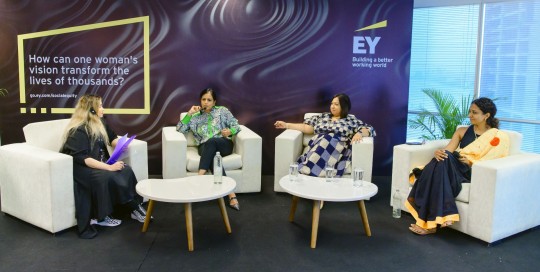
View On WordPress
0 notes
Text
Building Inclusive Excellence: Strategies for Effective DEI Programs

Share Post:
LinkedIn
Twitter
Facebook
Reddit
Diversity, Equity, and Inclusion (DEI) programs are essential initiatives for creating more equitable and inclusive workplaces, fostering diversity of thought, and empowering all employees to thrive. Implementing effective DEI programs requires a strategic approach that addresses systemic barriers, promotes cultural competence, and fosters a sense of belonging for all individuals. In this guide, we’ll explore strategies and best practices for developing and implementing successful DEI programs that drive positive change and create a more inclusive organizational culture.
Here are 15 Strategies for Effective DEI Programs
1. Establish Clear Goals and Objectives
Define clear and measurable goals for your DEI program, aligned with the organization’s mission, values, and strategic priorities. Identify key areas for improvement, such as recruitment and hiring practices, employee development, and workplace culture, and set specific objectives to guide your efforts and track progress over time.
2. Commitment from Leadership
https://enterprisewired.com/wp-content/uploads/2024/04/2.1-Commitment-from-Leadership.jpg
Ensure strong commitment and visible support from organizational leadership for the DEI program. Leadership buy-in is essential for driving meaningful change, allocating resources, and fostering a culture of inclusion from the top down. Encourage leaders to champion DEI initiatives, lead by example, and hold themselves accountable for advancing diversity, equity, and inclusion within the organization.
3. Conduct a Diversity Assessment
Conduct a comprehensive diversity assessment to understand the current state of diversity, equity, and inclusion within the organization. Collect demographic data, employee feedback, and engagement surveys to identify areas of strength and opportunities for improvement. Use insights from the assessment to inform the development of targeted strategies and initiatives that address the unique needs and challenges of diverse employee groups.
4. Implement Bias Training and Education
Offer training and educational programs to raise awareness of unconscious bias, stereotypes, and microaggressions in the workplace. Provide employees with tools and strategies for recognizing and mitigating bias in recruitment, hiring, promotion, and decision-making processes. Foster a culture of continuous learning and growth by offering ongoing education and development opportunities on DEI-related topics.
5. Foster Inclusive Leadership
Invest in leadership development programs that promote inclusive leadership behaviors and practices. Train managers and supervisors on strategies for building diverse and inclusive teams, fostering open communication, and creating a sense of belonging for all employees. Empower leaders to lead with empathy, humility, and cultural competence, and hold them accountable for promoting equity and fairness in their decision-making.
6. Strengthen Recruitment and Hiring Practices

Review and revise recruitment and hiring practices to attract and retain a diverse talent pool. Implement strategies to reduce bias in job postings, candidate selection, and interview processes. Consider implementing blind resume reviews, diverse hiring panels, and inclusive language in job descriptions to minimize unconscious bias and promote diversity in hiring.
7. Create Affinity Groups and Employee Resource Networks
Establish affinity groups and employee resource networks to provide support, networking opportunities, and advocacy for underrepresented employee groups. Encourage employees to participate in affinity groups based on shared identities, interests, or experiences, such as race, ethnicity, gender, sexual orientation, or disability. Foster a sense of community and belonging by providing resources, events, and forums for employees to connect, collaborate, and celebrate diversity.
8. Promote Career Development and Advancement Opportunities
Offer career development programs and advancement opportunities that promote equity and inclusivity. Provide mentorship, sponsorship, and coaching programs to support the professional growth and advancement of employees from underrepresented backgrounds. Ensure that promotion and advancement processes are transparent, merit-based, and free from bias, and provide pathways for all employees to achieve their full potential within the organization.
9. Create Inclusive Policies and Practices
Review and revise organizational policies and practices to ensure they promote equity, fairness, and inclusion for all employees. Implement flexible work arrangements, accommodations, and benefits programs that support the diverse needs of employees across different backgrounds and life stages. Ensure that policies related to harassment, discrimination, and workplace conduct are clear, accessible, and enforced consistently to maintain a safe and respectful work environment for all.
10. Measure and Evaluate Progress
Establish metrics and key performance indicators (KPIs) to measure the effectiveness of your DEI program and track progress over time. Collect data on diversity representation, employee engagement, retention rates, and promotion rates to assess the impact of DEI programs and identify areas for improvement. Use feedback from employees, stakeholders, and external partners to evaluate the success of DEI programs and make data-driven decisions to drive continuous improvement.
11. Cultivate Allyship and Advocacy
Encourage employees to become allies and advocates for diversity, equity, and inclusion within the organization and beyond. Provide training and resources to help employees recognize their privilege, challenge systemic inequities, and take action to support marginalized and underrepresented colleagues. Foster a culture of solidarity, empathy, and collective responsibility for creating a more inclusive and equitable workplace for all.
12. Collaborate with External Partners and Community Organizations
Forge partnerships with external organizations, community groups, and diversity-focused initiatives to amplify the impact of your DEI efforts. Collaborate with industry associations, nonprofit organizations, and diversity networks to share best practices, leverage resources, and advocate for systemic change. Engage with community leaders, policymakers, and other stakeholders to address social and economic disparities and promote equity and inclusion in the broader community.
13. Communicate Transparently and Authentically
Communicate openly and authentically about the organization’s DEI initiatives, progress, and challenges with employees, stakeholders, and the public. Provide regular updates, reports, and forums for dialogue to keep employees informed and engaged in the DEI journey. Demonstrate transparency, accountability, and humility in acknowledging areas for improvement and soliciting feedback to drive meaningful change and build trust with stakeholders.
14. Celebrate Diversity and Inclusion

Celebrate diversity and inclusion as core values of the organization and recognize the contributions and achievements of diverse individuals and groups. Host events, workshops, and cultural celebrations to honor diverse identities, cultures, and traditions within the organization. Create opportunities for employees to share their stories, experiences, and perspectives to foster understanding, empathy, and appreciation for diversity in all its forms.
15. Sustain Commitment and Momentum
Sustain long-term commitment and momentum for DEI by embedding diversity, equity, and inclusion into the fabric of the organization’s culture, policies, and practices. Integrate DEI considerations into strategic planning, decision-making processes, and performance evaluations to ensure that diversity and inclusion remain priorities across all levels of the organization. Continuously assess and adapt DEI initiatives to respond to changing needs, emerging trends, and evolving best practices in diversity, equity, and inclusion.
Conclusion
Building inclusive excellence requires intentional effort, strategic investment, and collective action to create a workplace where all individuals feel valued, respected, and empowered to bring their authentic selves to work. By implementing these strategies and best practices for developing effective DEI programs, organizations can cultivate a culture of diversity, equity, and inclusion that drives innovation, fosters belonging, and enhances organizational performance and impact. Together, we can create a more equitable and inclusive future where everyone has the opportunity to thrive and succeed.
0 notes
Text
Interview with Ms. Shannon Mathew
Interviewer: Thank you for taking the time to speak with me, Ms. Mathew. To start, could you please tell me about the most important social issues that the UMKC chapter of the American Medical Women's Association wishes to address?
Ms. Mathew: Absolutely. Thank you for having me. At AMWA UMKC, our primary focus is on advocating for gender equity and advancing women's leadership in medicine. We aim to address various social issues related to gender disparities in healthcare, including pay inequity, underrepresentation in leadership roles, and access to healthcare for marginalized communities.
Interviewer: That's commendable. Could you elaborate on the strategies your organization employs for outreach and how you engage the public in your advocacy efforts?
Ms. Mathew: Certainly. We utilize a multifaceted approach to outreach, which includes organizing workshops, seminars, and panel discussions on relevant topics such as women's health, career development, and advocacy skills. We also collaborate with other student organizations and community partners to host events that raise awareness about gender issues in healthcare. Additionally, we leverage social media platforms and our website to disseminate information and engage with the public through interactive posts, campaigns, and educational resources.
Interviewer: That sounds like a comprehensive approach. What motivated you personally to become a part of AMWA UMKC?
Ms. Mathew: As a future healthcare professional, I am passionate about promoting gender equity in medicine and ensuring that all individuals have equal opportunities to thrive in the healthcare field. Joining AMWA UMKC allows me to actively contribute to this cause and work alongside like-minded peers who share a commitment to advancing women's rights and empowerment in healthcare.
Interviewer: Thank you for sharing. Is there anything you feel your organization could improve or do better?
Ms. Mathew: While we have made significant strides in our advocacy efforts, there is always room for improvement. One area where we could enhance our impact is by increasing our outreach to underserved communities and addressing the intersectional challenges faced by women from diverse backgrounds. Additionally, we could strengthen our mentorship and support programs to better assist members in navigating the complexities of a career in medicine.
Interviewer: Finally, how do you perceive AMWA UMKC's outreach compared to other collegiate, local, or national organizations addressing similar issues?
Ms. Mathew: AMWA UMKC is dedicated to fostering collaboration and synergy with other organizations at the collegiate, local, and national levels. While we may differ in our specific approaches and areas of focus, we recognize the importance of collective action in effecting meaningful change. Our partnerships with local healthcare institutions, community organizations, and national affiliates allow us to amplify our advocacy efforts and reach a broader audience. Overall, I believe AMWA UMKC is making a significant impact within our community and contributing to a larger movement towards gender equity in medicine.
Interviewer: Thank you again, Ms. Mathew, for sharing your insights and experiences with us. Your dedication to advancing gender equity in medicine is truly inspiring.
Ms. Mathew: It's my pleasure. Thank you for the opportunity to discuss our organization's work. If you have any further questions or would like to learn more about AMWA UMKC, please don't hesitate to reach out.
0 notes
Text
Addressing Gender Inequality in the Workplace: A Path to Equality

Gender inequality in the workplace remains a pressing issue that not only impacts individuals but also hinders progress for organisations and society as a whole. This blog will explore the importance of addressing gender inequality, its far-reaching consequences, and practical strategies for achieving gender equality in your workplace.
Understanding Gender Inequality
Recognising Gender Inequality
Gender inequality in the workplace refers to disparities in treatment, opportunities, and pay based on an individual's gender. It can manifest in various ways, such as unequal pay for equal work, underrepresentation of women in leadership roles, and biased hiring and promotion practices. Recognising these disparities is the first step towards addressing them.
The Cost of Gender Inequality
Gender inequality comes at a significant cost to both individuals and organisations. It can lead to reduced career prospects, lower income, and a lack of job satisfaction for individuals. Women often find themselves disproportionately burdened with domestic responsibilities, leading to the infamous "double shift", where they perform paid work and unpaid household labour. For organisations, gender inequality results in missed opportunities for innovation and growth, reduced diversity of thought, and reputational damage. Companies that fail to address these issues may find themselves at a disadvantage in the competitive job market and facing legal and public relations challenges.
Strategies for Addressing Gender Inequality
Promoting Equal Pay
One of the key aspects of addressing gender inequality is ensuring equal pay for equal work. Conduct pay equity audits to identify and rectify wage gaps. Implement transparent salary structures and performance evaluation systems. Equal pay isn't just about fairness; it's a legal requirement in many countries, and addressing pay disparities is essential to creating a more equitable workplace.
Creating Inclusive Policies
Develop and enforce inclusive policies that promote work-life balance and accommodate all employees' needs, irrespective of gender. This can include flexible work arrangements, parental leave policies, and childcare support. By offering such policies, organisations can help employees balance their professional and personal lives, reducing the gendered burden of caregiving and allowing everyone to thrive in their careers.
Encouraging Diverse Leadership
Promote gender diversity in leadership positions. Establish clear pathways for women to advance into leadership through mentorship, sponsorship programmes, and leadership development initiatives. Women make up a significant portion of the workforce but are often underrepresented in top positions. Fostering diverse leadership empowers women and brings different perspectives to the decision-making table, leading to better business outcomes.
Education and Training
Offer training programmes that raise awareness about unconscious bias and the importance of gender equality. These programmes can help employees recognise and challenge their biases and foster a more inclusive workplace culture. Many people hold unconscious biases that affect their perceptions and decisions. Training can help individuals become more aware of these biases and learn how to mitigate their impact.
Fostering a Gender-Inclusive Culture
Equal Opportunity Hiring and Promotion
Implement fair and transparent hiring and promotion practices focusing on qualifications and skills rather than gender. Encourage diverse candidate pools and diverse interview panels to reduce bias. To achieve gender equality, organisations must ensure that every step of the hiring and promotion process is free from gender-based discrimination. This includes evaluating candidates solely on their merits, not their gender.
Addressing Workplace Harassment
Create a zero-tolerance policy for workplace harassment, including sexual harassment. Ensure that employees know the reporting mechanisms and that all complaints are taken seriously and investigated promptly. Workplace harassment disproportionately affects women, and addressing it is critical for creating a safe and equitable environment for all employees.
Mentorship and Support Networks
Establish mentorship programmes to provide support and guidance to women in the workplace. Encourage forming employee resource groups that focus on gender equality and provide a platform for discussions and initiatives. Mentorship can help women navigate the challenges of their careers, and support networks provide a sense of community and empowerment.
Measuring Progress
Data Collection and Analysis
Collect and analyse data on gender diversity, pay equity, and career progression within your organisation. Regularly assess the impact of your gender equality initiatives and make adjustments as needed. Data is essential for tracking progress and identifying areas that require improvement. Without data, it's challenging to measure the effectiveness of gender equality efforts.
Employee Feedback
Seek employee feedback, especially from women, about their experiences in the workplace. Conduct surveys, focus groups, or one-on-one interviews to understand their perspectives and gather suggestions for improvement. Employee feedback is invaluable for understanding women's lived experiences in your organisation and identifying specific areas where change is needed.
Reporting and Transparency
Be transparent about your progress towards gender equality. Publish annual reports on gender diversity, pay equity, and the results of employee feedback. Celebrate achievements and communicate areas where improvement is needed. Transparency builds trust and demonstrates a commitment to meaningful change.
Addressing gender inequality in the workplace is a moral imperative and a strategic advantage. By promoting gender equality, organisations can tap into a diverse talent pool, drive innovation, and enhance their reputation. It's time to take concrete actions that create a workplace where everyone, regardless of gender, can thrive and contribute to a more equitable and prosperous future. Gender equality is not just the right thing to do; it's smart.
For more information about addressing gender inequality in the workplace, visit Tell Jane's website.
© Tell Jane
0 notes
Text
Eco-Friendly Lifestyle
In pursuing a greener future, embracing energy-efficient technology becomes paramount, and Doyle Apartments exemplifies this commitment through features such as smart appliances, solar panel rooftops, and car charging stations. By incorporating smart appliances, residents at Doyle experience reduced energy consumption, leading to lower utility costs and a smaller environmental footprint. The solar panel rooftops harness clean energy and contribute to a sustainable power source, mitigating reliance on traditional, non-renewable resources. Including car charging stations encourages eco-friendly transportation, promoting the use of electric vehicles and reducing emissions. In choosing Doyle, individuals searching for apartments near UMN not only embrace a stylish and contemporary lifestyle but also actively contribute to a greener future.
The Transportation System in Minneapolis, Minnesota
Minneapolis, Minnesota, boasts a comprehensive and well-connected transportation system catering to the diverse needs of its residents and visitors. The Metro Transit bus and light rail network efficiently traverses the city and surrounding suburbs, providing a reliable and eco-friendly public transportation option. The city's extensive network of bike trails and lanes promotes cycling as a viable means of commuting. Interstate highways facilitate convenient travel by car, linking Minneapolis to neighboring cities and regions. The Minneapolis-Saint Paul International Airport is a major air transportation hub connecting the city globally. With a commitment to sustainability and accessibility, Minneapolis continues to invest in innovative transit solutions, contributing to the city's reputation as a well-planned and interconnected urban environment.
Minnehaha Park in Minneapolis, Minnesota
Minnehaha Park is a captivating natural haven that seamlessly blends scenic beauty with historical charm. Renowned for its stunning 53-foot waterfall, Minnehaha Falls offers a scenic setting for visitors to enjoy nature's splendor. The park's extensive walking and biking trails wind through lush greenery, providing a serene escape within the city. Minnehaha Park is a haven for outdoor enthusiasts and a site of historical significance, featuring the Longfellow House and interpretive exhibits that delve into the region's past. With its cascading waters, expansive landscapes, and cultural elements, Minnehaha Park stands as an iconic destination, inviting residents and visitors alike to savor the tranquility and richness of this natural gem.
MN Fines Menards $15k After Punishing Woman for Pumping Breast Milk
Businesses should support breastfeeding women to promote a workplace environment that values inclusivity, gender equity, and employee well-being. Supporting breastfeeding mothers ensures they can maintain a work-life balance, contributing to their physical and mental health. Businesses foster a positive and supportive culture that enhances employee morale and loyalty by providing designated lactation spaces, flexible schedules, and understanding supervisors. Moreover, such support aligns with legal and ethical considerations, recognizing the importance of accommodating diverse needs within the workforce. Creating breastfeeding-friendly workplaces attracts and retains talented female professionals and contributes to a more inclusive and equitable corporate culture, reflecting positively on the company's reputation and commitment to social responsibility.
Link to maps
Minnehaha Falls
Minneapolis, MN 55417, United States
Head northwest on S Minnehaha Dr
0.1 mi
At the traffic circle, continue straight onto Minnehaha Ave
2.2 mi
Turn left onto E 32nd St
0.2 mi
Turn right onto Great River Rd/Hiawatha Ave
Continue to follow Hiawatha Ave
1.7 mi
Use the right 2 lanes to take the ramp onto I-35W N
1.1 mi
Use the right lane to take exit 18 for University Ave toward 4th St SE/County Rd 36
0.1 mi
Use the right 2 lanes to turn right onto University Ave SE
0.4 mi
Turn left onto 14th Ave SE
404 ft
Turn left onto SE 4th St
Destination will be on the right
285 ft
Doyle
1307 4th St SE, Minneapolis, MN 55414, United States
0 notes